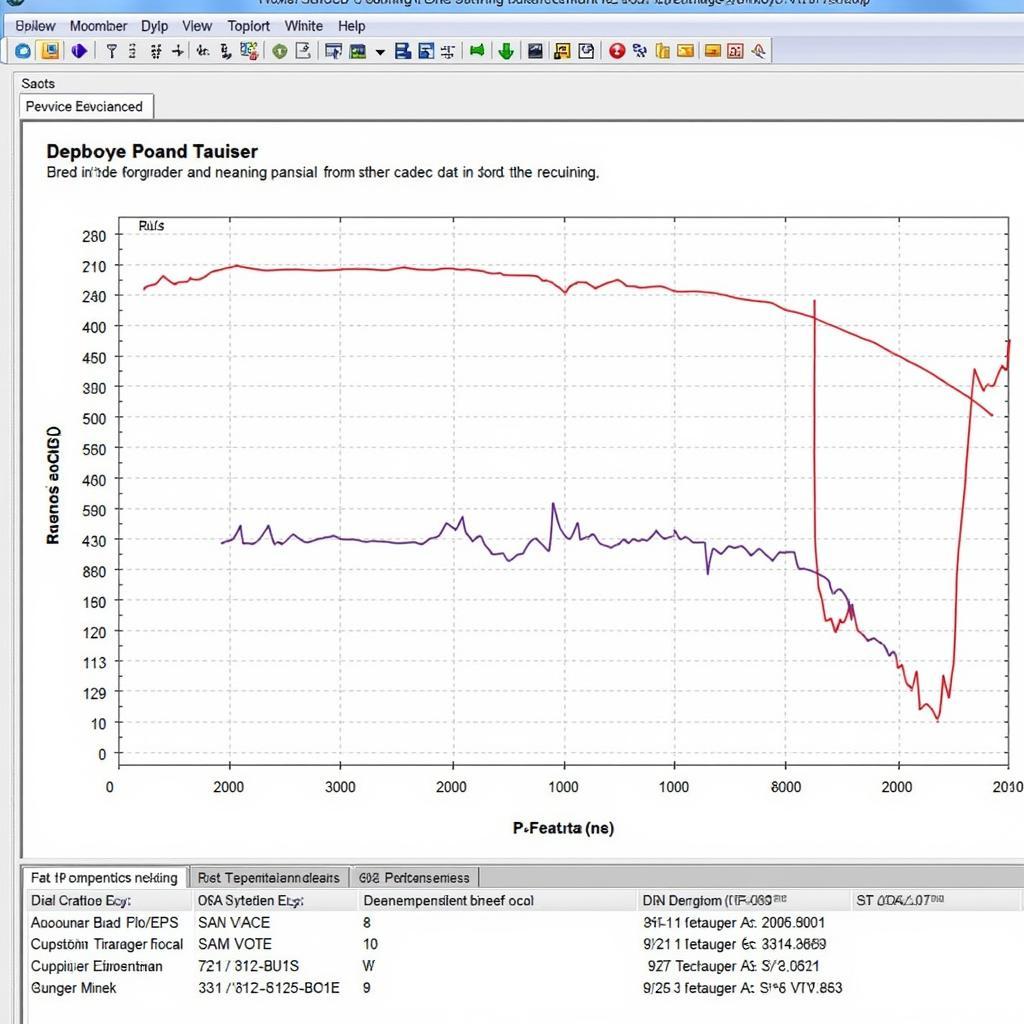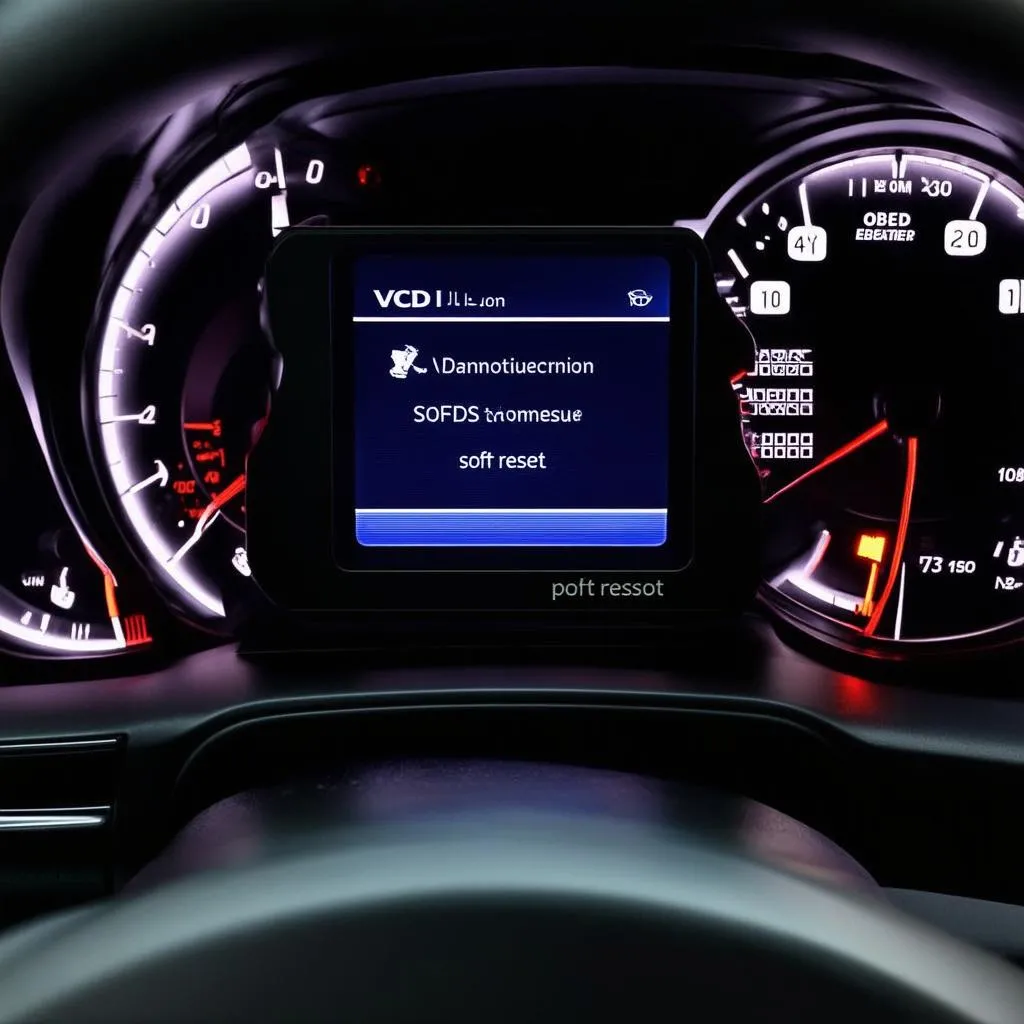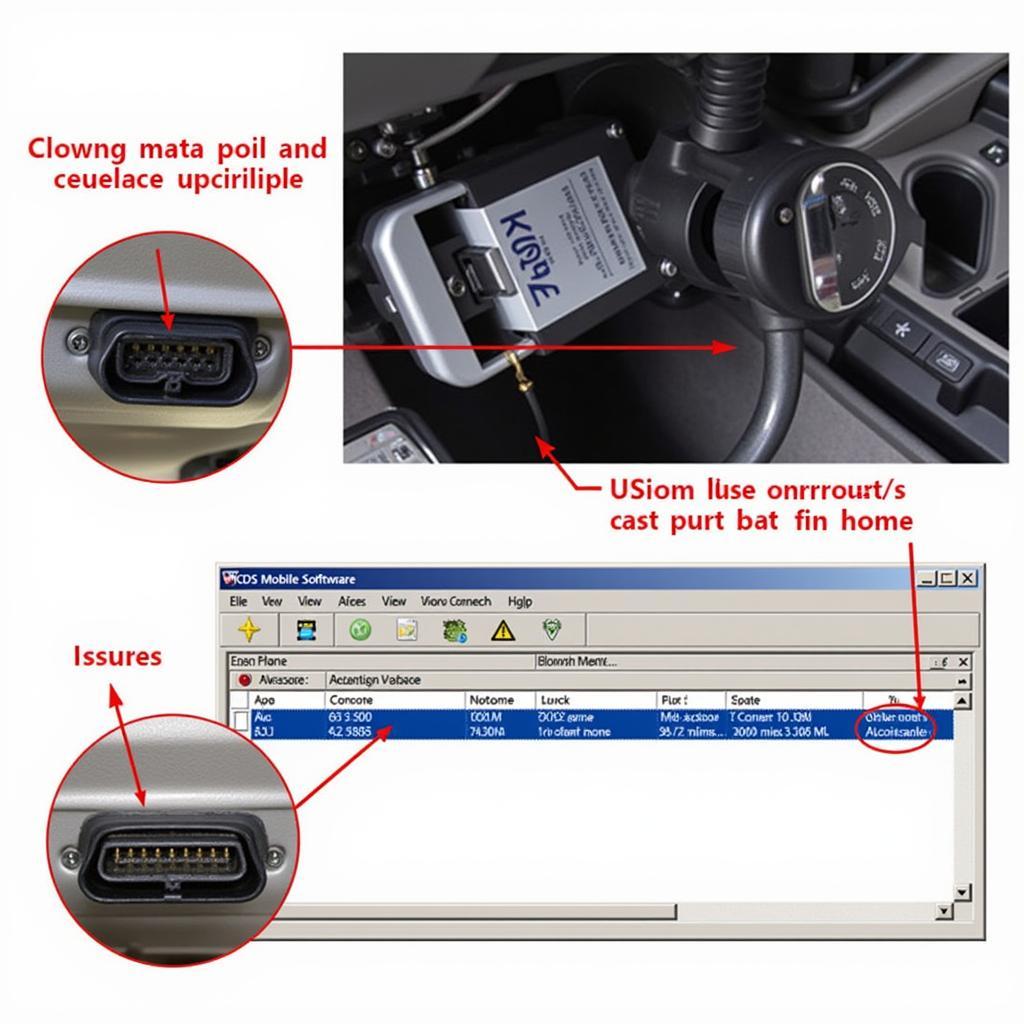Idle speed adjustment with VCDS is a crucial procedure for maintaining optimal engine performance and fuel efficiency in Volkswagen, Audi, Seat, and Skoda vehicles. A rough or fluctuating idle can indicate underlying issues, and VCDS, the powerful diagnostic software, provides the tools to diagnose and correct these problems. This article will guide you through the process of idle speed adjustment using VCDS, covering various scenarios and frequently asked questions.
Understanding Idle Speed and its Importance
The idle speed is the engine’s rotational speed when the car is not in motion and the accelerator pedal is not pressed. A correct idle speed is essential for smooth operation, fuel economy, and reduced emissions. Factors like engine temperature, load from accessories, and the condition of various engine components can influence idle speed. When these factors deviate from the norm, adjustments might be necessary. Using VCDS, we can accurately monitor and adjust the idle speed, ensuring the engine runs smoothly and efficiently.
How to Adjust Idle Speed with VCDS
Before adjusting the idle speed, it’s essential to diagnose the root cause of any irregularities. A diagnostic scan with VCDS can reveal fault codes related to sensors, actuators, or other components affecting idle speed. vcds idle speed adjustment can be accessed through specific engine control modules. Once in the module, navigate to the “Basic Settings” or “Adaptation” channels. Here, you can find the adaptation channels responsible for idle speed control. The exact channel number varies depending on the specific engine code, so consult your vehicle’s documentation or online resources like vcds channels for guidance. After identifying the correct channel, follow the on-screen prompts within VCDS to adjust the idle speed within the specified tolerance range.
Common Issues and Solutions
Several issues can contribute to incorrect idle speed. A faulty throttle position sensor, a malfunctioning idle air control valve, or vacuum leaks can disrupt the idle. VCDS allows you to monitor live data from these components, pinpointing the source of the problem. For example, observing erratic readings from the throttle position sensor while the accelerator pedal is stationary would suggest a potential fault. vcds for volkswagen allows for precise diagnostics and adjustments in Volkswagen vehicles, ensuring optimal idle performance.
 VCDS Diagnosing Idle Issues Graph
VCDS Diagnosing Idle Issues Graph
Why is My Idle Speed Fluctuating?
Fluctuations in idle speed can be caused by several factors, including a dirty throttle body, vacuum leaks, or issues with the engine control module. VCDS allows for precise diagnosis of these issues.
Can I Adjust Idle Speed Myself with VCDS?
While VCDS is a powerful tool, adjusting idle speed requires some technical understanding. Incorrect adjustments can negatively impact engine performance. Consult a qualified technician if unsure.
What VCDS Version Do I Need for Idle Speed Adjustment?
Most recent versions of VCDS support idle speed adjustment. However, ensure compatibility with your specific vehicle model. vcds commander is a comprehensive software version with extensive functionality for various diagnostic and adjustment procedures.
What Precautions Should I Take When Adjusting Idle Speed with VCDS?
Always ensure the engine is at operating temperature before making adjustments. Follow the instructions carefully and avoid exceeding the recommended tolerance range.
Advanced Idle Speed Adjustment Techniques with VCDS
For more complex issues, VCDS offers advanced functionalities like logging data and comparing it to factory specifications. These features enable in-depth analysis and precise adjustments. vcds idle speed adjustment diesel can be slightly different from gasoline engines, requiring specific adaptation channels and procedures.
“Precise idle speed adjustment is crucial for optimal engine performance and fuel economy. VCDS provides the necessary tools for accurate diagnosis and correction,” says John Miller, Senior Automotive Diagnostic Technician at CARDIAGTECH. “Understanding the intricacies of your engine’s control system and using VCDS effectively can greatly enhance your ability to troubleshoot and resolve idle speed issues,” adds Maria Sanchez, Lead Software Engineer at CARDIAGTECH.
Conclusion
Idle speed adjustment with VCDS is an essential procedure for maintaining optimal engine performance. By understanding the underlying principles and using VCDS effectively, you can diagnose and correct idle speed issues, ensuring smooth and efficient engine operation. Remember to always exercise caution when making adjustments and consult a qualified technician if unsure.
FAQ
- What is VCDS? VCDS is a diagnostic software for VAG vehicles.
- How do I find the correct adaptation channel for idle speed? Consult your vehicle’s documentation or online resources.
- What are the common causes of rough idle? Faulty sensors, vacuum leaks, or a dirty throttle body.
- Is it safe to adjust idle speed myself? Proceed with caution and consult a technician if unsure.
- What are the benefits of a correct idle speed? Smooth operation, fuel efficiency, and reduced emissions.
- What are some advanced features of VCDS for idle speed adjustment? Data logging and comparison with factory specifications.
- Where can I find more information on VCDS? The CARDIAGTECH website offers a wealth of resources.
Need assistance? Contact us via WhatsApp: +1 (641) 206-8880, Email: CARDIAGTECH[email protected] or visit us at 276 Reock St, City of Orange, NJ 07050, United States. Our customer support team is available 24/7.


